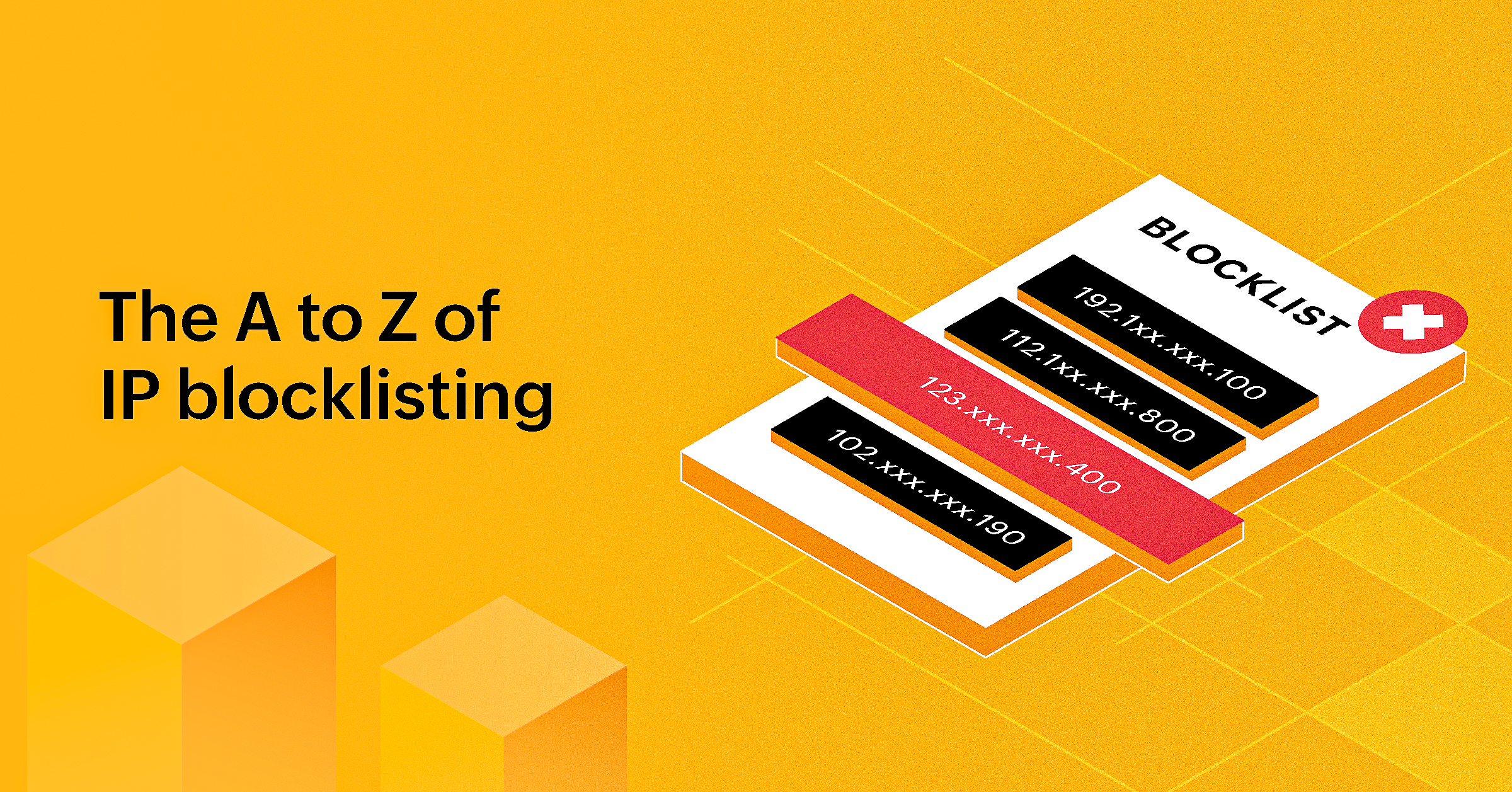What is IP blocklisting?

Imagine a bouncer at the entrance of a website, carefully checking IDs and denying entry to anyone who can cause a security risk. IP blocklisting functions similarly.
What is IP blocklisting?
IP blocklisting (earlier called as IP blacklisting), is a security measure where IP addresses associated with malicious activity are added to a blocklist, essentially preventing them from accessing certain networks or systems.
Organizations that maintain blocklists, like security vendors or internet service providers (ISPs), compile lists of IP addresses linked to suspicious or harmful activities. These activities can include spamming, hacking attempts, or downloading copyrighted material illegally. Networks or systems that utilize blocklists check the IP address of every incoming connection. If the IP address matches an entry on a blocklist, the connection is denied. This prevents malicious actors from accessing resources or launching attacks.
What are the benefits of IP blocklisting and why is it important?
Wait, how can IP blocklisting be beneficial when it can cause potential harm to your site? If this is what you're wondering, then let's explain. In the ever-evolving battle against cyberthreats, IP blocklisting has emerged as a valuable tool. By essentially creating a digital quarantine zone, it helps safeguard networks and systems from malicious actors.
Here's a closer look at the key advantages of implementing IP blocklisting:
- Enhanced security
The primary benefit of IP blocklisting lies in its ability to erect a shield against known threats. By blocking IP addresses associated with malicious activity, you significantly reduce the risk of successful cyberattacks. Imagine a bank that blocklists known hacker IPs. This proactive measure makes it significantly harder for attackers to gain unauthorized access to sensitive financial data. - Reduced spam
Unwanted emails can be a major nuisance, not only for individual users but also for businesses. IP blocklisting can be a powerful weapon in the fight against spam. When many users report your IP as a spam, it will end up in the blocklist. By blocklisting the IP addresses of known spammers, organizations can significantly decrease the amount of spam received, boosting user productivity and email server efficiency. - Improved network performance
Malicious traffic, such as denial-of-service attacks, can overwhelm networks and cause performance degradation. IP blocklisting acts as a traffic filter, blocking these disruptive activities before they can negatively impact network performance. This translates to a smoother user experience and ensures critical systems remain accessible and operational.
What happens when your site gets blocklisted?
Being blocklisted can be a nightmare for any website owner. It essentially means your site is flagged as potentially harmful or risky, leading to a significant drop in traffic and potential damage to your reputation.
- Reduced visibility and traffic
- Search engine blocklisting: If blocklisted by search engines like Google, your website won't appear in search results. This can be devastating, as search engines are a major source of website traffic for most businesses.
- Browser warnings: Users who try to access your blocklisted site may encounter warning messages from their web browsers, discouraging them from visiting. This can lead to a significant drop in direct traffic.
- Reputational damage
- Loss of trust: A blocklisted website can be perceived as untrustworthy or even malicious. This can damage your brand reputation and deter potential customers from doing business with you.
- Loss of brand reputation: Depending on the reason for the blocklisting, you might face a negative impression, further tarnishing your reputation.
- Potential revenue loss
- Reduced sales and conversions: With fewer visitors coming to your site, your sales and conversions are likely to take a hit. This can be a major blow for businesses that rely on online revenue.
What to do if your site is blocklisted?
If your site is blocklisted, the first step is to determine which blocklist(s) your site is on. Several online monitoring platforms like Site24x7 can help you find whether your site is blocklisted or not. Once you know the blocklist, investigate why your site was flagged. Common reasons include malware infections, spam activity, or phishing attempts. Address the underlying issue and this might involve removing malware, cleaning up spammy content, or fixing security vulnerabilities. Most blocklists have a process for requesting delisting once you've resolved the problem. Submit a delisting request with evidence of the corrective actions taken.
Once delisted, implement measures to prevent future blocklisting. Regularly scan your site for malware, monitor for suspicious activity using tools like Digital Risk Analyzer and maintain good security practices.By taking these steps, you can recover from being blocklisted and prevent it from happening again.
How to avoid getting blocklisted?
Avoiding blocklists boils down to responsible online behavior. Maintain a clean reputation, secure your systems, and be mindful of your email marketing practices. Keep your website content squeaky clean and choose a reputable web host. Most importantly, use an efficient monitoring tool to help you assess your security posture as well as keep you updated on whether your site is blocklisted. Transparency is key. Clearly outline policies and terms of service. If blocklisted, respond promptly and demonstrate you've addressed the issue. By following these steps, you can navigate the digital world with confidence, avoiding the pitfalls of blocklisting.
Topic Participants
Bela Susan Thomas